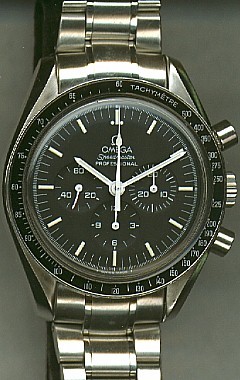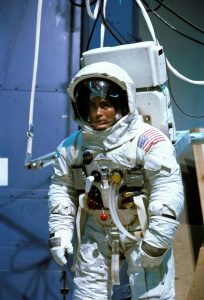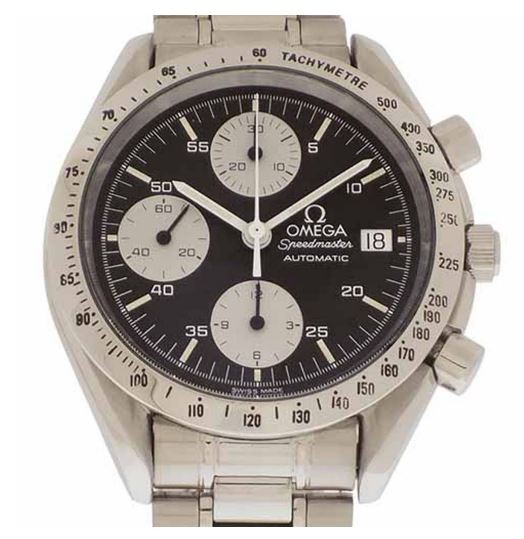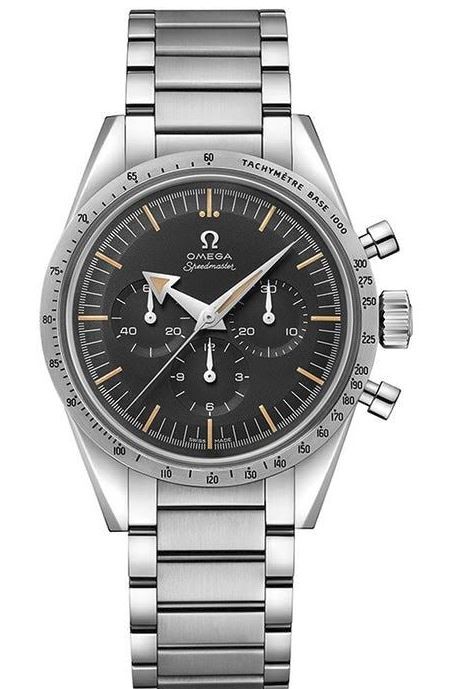Omega Celebrates 60 Years of the Legendary Speedmaster
Unless you have been living in outer space, you have most likely heard of the Omega Speedmaster Professional watch. You may know it by its nickname, the “Moonwatch,” because this watch has actually traveled to the moon and back. The iconic Omega Speedmaster celebrates its 60th anniversary this year.
In 1957, Omega unveiled its first Speedmaster chronograph watch, complete with a tachymeter bezel for measuring speeds. Designed as a sporty timepiece, that first Speedmaster (reference CK2915) took its name from the tachymeter scale (speed) and from the brand’s Seamaster and Railmaster collections (Master). Omega did not set out to design a space watch, but rather a sporty instrument for auto enthusiasts, runners, swimmers and more.
NASA puts the Omega watch to the test
However, in late 1964 and early 1965, NASA sought a watch fit for space exploration. They requested several watches from different brands be submitted for rigorous testing. One of the key criteria was that the watch be manually wound, automatic watches being dependent on gravity to keep them going. Omega sent the Speedmaster.
The Speedmaster performed perfectly under all testing conditions. In March 1965, it was deemed “flight qualified by NASA for all manned space missions,” the only watch with such distinction. This was a defining moment in both watchmaking and world history.


Astronaut Ed White wore an Omega Speedmaster on the first American spacewalk as part of the Gemini 4 mission. Buzz Aldrin took a walk on the moon on the wearing his Speedmaster during the Apollo 11 mission. But its greatest role was yet to come.
The Omega and the Apollo 13
The Omega Speedmaster Professional is credited with helping to save the lives of the astronauts aboard the fateful Apollo 13 mission in 1970.
Just two days into the Apollo 13 voyage and almost three-quarters of the way to the moon, an oxygen tank exploded. Astronaut Jack Swigert radioed back to Earth with the now famous short five-word message: “Houston, we have a problem.” (Actually, it was “Houston, we’ve had a problem.”) Also aboard were Fred Haise and James Lovell.


The explosion of oxygen tank number 2 caused the number 1 tank to also fail. The command module lost its normal supply of electricity, light and water 200,000 miles from Earth. Then, less than 90 minutes after the explosion, Houston and the astronauts realized they would have to use the Lunar Module as a “life boat” to return to Earth.
Surviving minute by minute
Houston cancelled the lunar landing plan and instructed the astronauts to climb into the Lunar Module, separate from Command Module, and loop around the moon to gain enough acceleration for their return to Earth. They powered down all systems for the return journey to keep the life-support and communications systems operational until re-entry.
The journey back required two course corrections to ensure the proper trajectory for the re-entry. With the Lunar Module fully powered down, Lovell used a gun site’s cross hairs to align with the terminator line of the Earth for aim. He relied solely on his Omega Speedmaster to perfectly time the last controlled burn of the LM engine to adjust the module’s flight track with the proper re-entry course. Without the proper timing of that burn, the LM and its occupants would have bounced off Earth’s atmosphere and been marooned in the darkness of space.
The life-saving Speedmaster is awarded a rare prize
For the vital role it played, NASA honored the Omega Speedmaster with the prestigious Silver SNOOPY Award, given to less than 1% of NASA employees and contractors for outstanding achievements related to human flight safety or mission success. The “Moonwatch” became synonymous with the Speedmaster forever more.
Over the ensuing decades, Omega regularly unveiled new Speedmaster Professional watches, honoring its relationship with NASA and space missions, and its founding concept as a sports-oriented chronograph. These are typically renditions with new dials, colors, materials and movements, like this automatic.


The classic Moonwatch gets an upgrade
This year, the 60th anniversary of the Speedmaster, Omega unveiled the vintage-inspired Speedmaster that is almost an exact replica of the very first one (CK2915). To accomplish this, the brand used tomography and 3D printing, taking more than 3,000 successive digital images of the original watch in order to study every detail. The new Speedmaster replicates the original to the nearest accent and even has the original logo on the dial.
Just a few things are not original. The movement inside is a current-day state-of-the-art Omega 1861 caliber. Additionally, the black dial features vintage indexes and Super-LumiNova numerals and markers, rather than tritium, as in the original watches from 1957.


Each 38.6mm stainless steel Speedmaster Anniversary watch features a caseback engraved with the designs of the originals. The 1957 Speedmaster is being produced in a limited edition of 3,557 pieces.
Read more about the Speedmaster in the online Omega museum.



